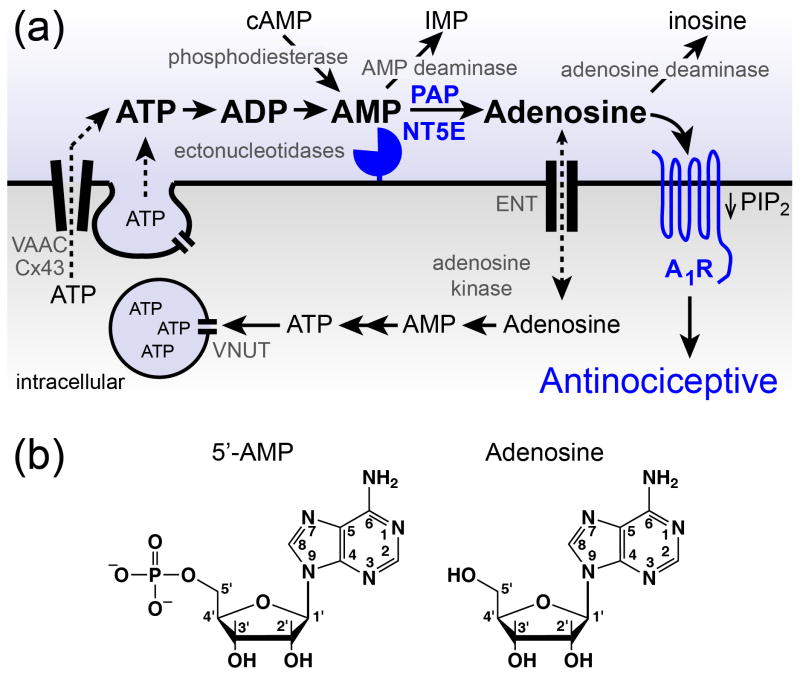Figure 1.
Proteins that regulate extracellular adenosine levels also influence adenosine receptor activation. (a). ATP can be released from neurons and/or glial cells by vesicular and non-vesicular mechanisms. Vesicular nucleotide transporter (VNUT/ SLC17A9), volume activated anion channels (VAAC), Connexin 43 (Cx43). Ectonucleotidases (pacman-like symbol) hydrolyze extracellular nucleotides to adenosine. Adenosine acts on adenosine receptors, including A1R. Sustained A1R activation reduces PIP2 levels and has antinociceptive effects in animals. Adenosine is removed from the extracellular space by metabolic enzymes or by transport into cells via equilibrative nucleoside transporters (ENTs). AMP deaminase metabolizes AMP to inosine monophosphate (IMP). Blue = proteins linked to nociceptive mechanisms by genetic experiments. (b). Structures of 5’-AMP and adenosine.

